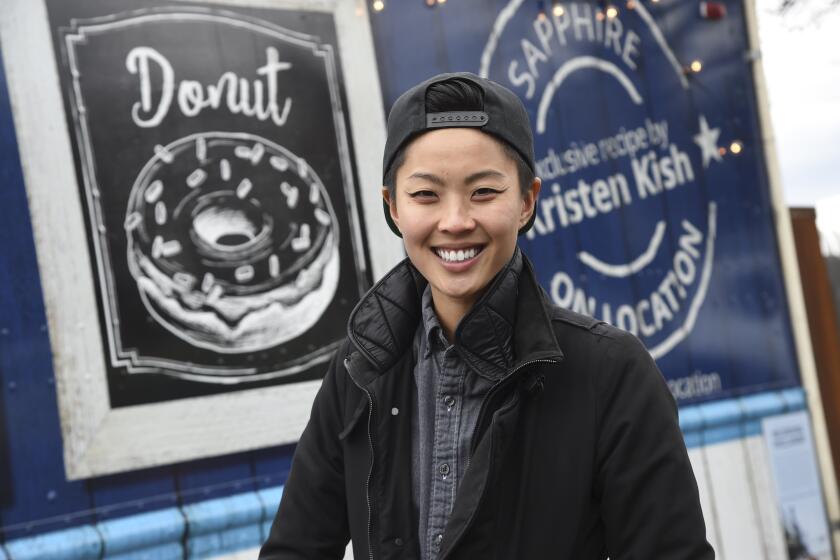A summer escape to the world’s most beautiful place to eat lentils
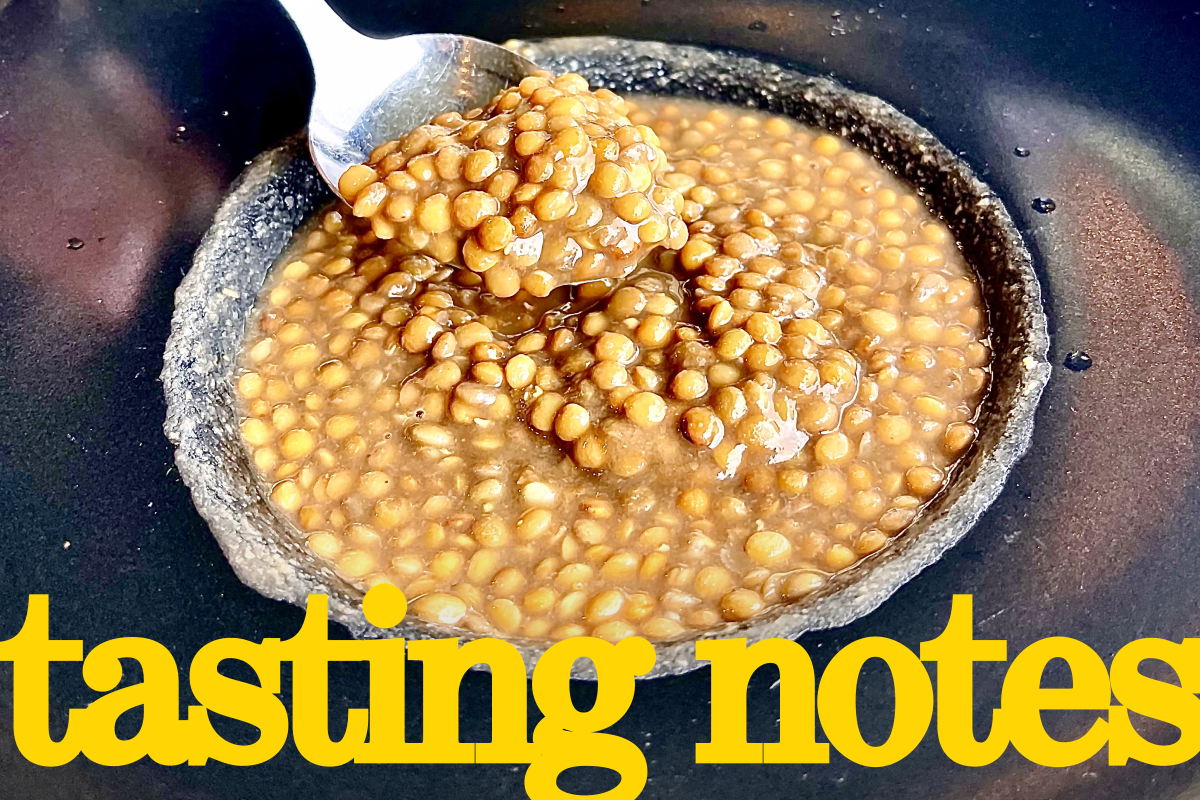
- Share via
It may not be hot enough to fry an egg on the sidewalk — it would need to be “near 150 degrees Fahrenheit,” says Smithsonian magazine, adding that a 1933 L.A. Times article helped popularize the myth (see last item). But the heat has me thinking of escaping to an alpine meadow in Italy where the temperatures this coming week will be in the 70s and 60s. Plus, hopeful signs that we are seeing the beginning of a turnaround for L.A. restaurants, Hello Kitty’s L.A. cafe debut, Oki Dog’s West Hollywood farewell and more. I’m Laurie Ochoa, general manager of L.A. Times Food, with this week’s Tasting Notes.
Destination restaurant
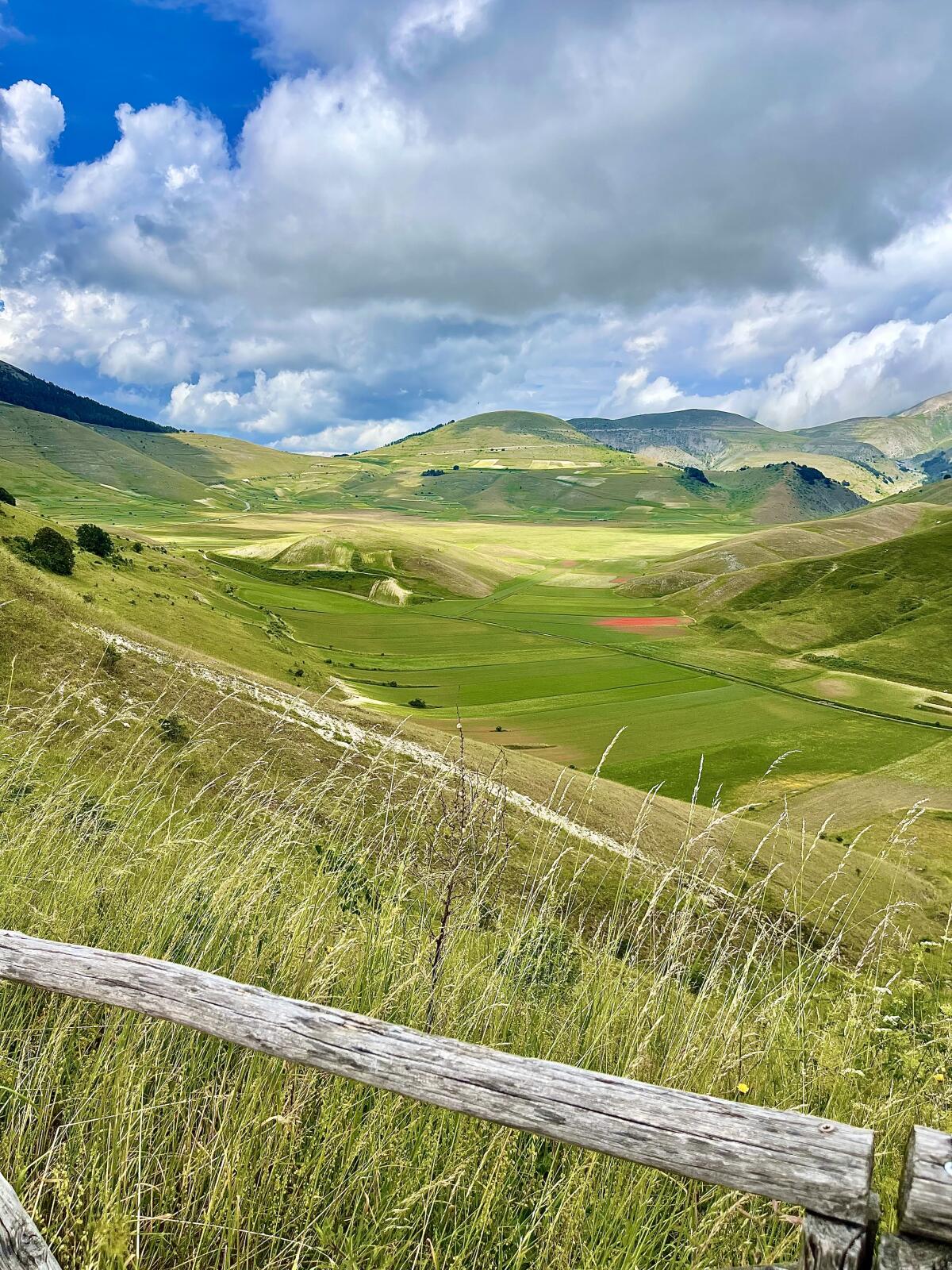
When you come around one of the last hairpin curves on the road from the ancient Umbrian butcher city of Norcia — or from Visso in the Marche if arriving from the north — your first look at the Apennine plains that surround the tiny village of Castelluccio can take your breath away.
Located more than 4,700 feet above sea level with mountains rising even higher in the near distance, Castelluccio, which dates at least to the 13th century and possibly to Roman times, sits on a hill in the midst of a wide expanse of grassland that each spring and summer explodes with wild flowers — crocuses and orchids early in the season, then red poppies, blue cornflowers, yellow rapeseed buds and, vital to the region, white lentil blossoms.
A single image cannot capture the beauty of the plains that attract sheepherders and their flocks, trekkers off the trails of Monti Sibillini National Park, hang gliders who soar above wild and trained horses plus daytrippers with all manner of pricey photo equipment or cheap cellphones for selfies. I come for lunch.
Taverna Castelluccio, run by Giuseppe “Peppe” Caponecchi and his family, is my kind of destination restaurant with many rewards for those seeking honest cooking from local ingredients. Not just the lentils, but all kinds of salumi. Farro and chickpeas. Pecorino cheese. Black summer truffles.
This is one of the first places I learned that truffles, a luxury in so many corners of the world, is abundant and affordable in its summer form, freely shaved on a simple plate of pasta, on farm-fresh eggs or scattered on top of a crock of melted scamorza cheese.
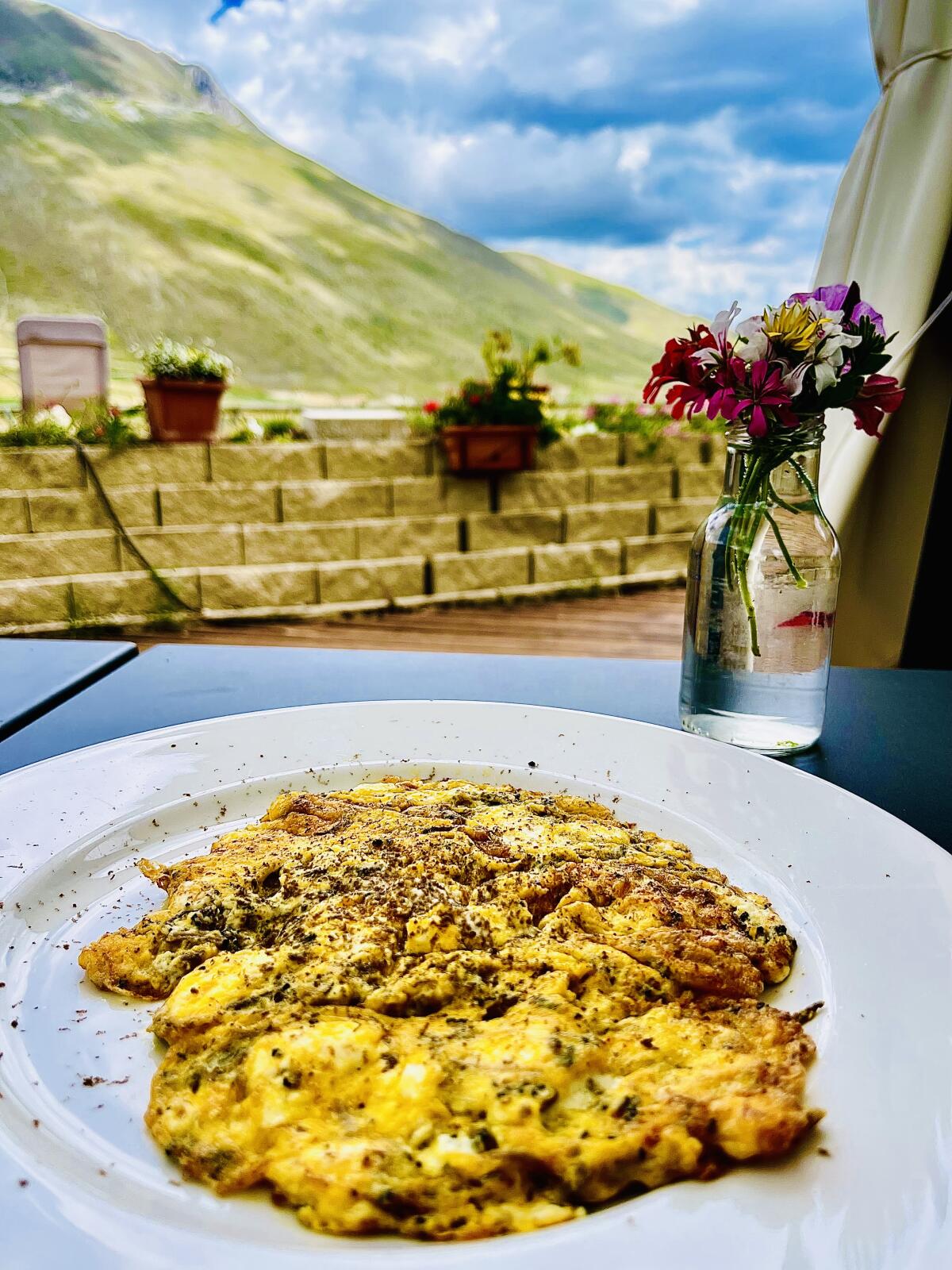
Countless food lovers in Italy and around the world have a soft spot for the place. Of course, among our friends it was Jonathan Gold, my late husband and this paper’s restaurant critic before his death six years ago, who first wanted to make the drive to Castelluccio and instilled a deep love for the place with me, my kids and two of our writer pals, Margy Rochlin and Robert Abele, frequent Times contributors.
We’ve been going to Italy nearly every summer for more than 20 years, using the Umbrian hilltown Panicale as our base for exploring the country. Most years, we try to make time for a day trip to Castelluccio. Earthquakes in 2016 devastated Castelluccio and surrounding towns, including Norcia, and rebuilding has been slow through COVID and political negotiations. But the people here are resilient and moved their restaurants into what were intended to be provisional steel structures on the town’s outskirts; local products are sold at wood kiosks, trailers and a few reinforced buildings that weren’t destroyed.
1
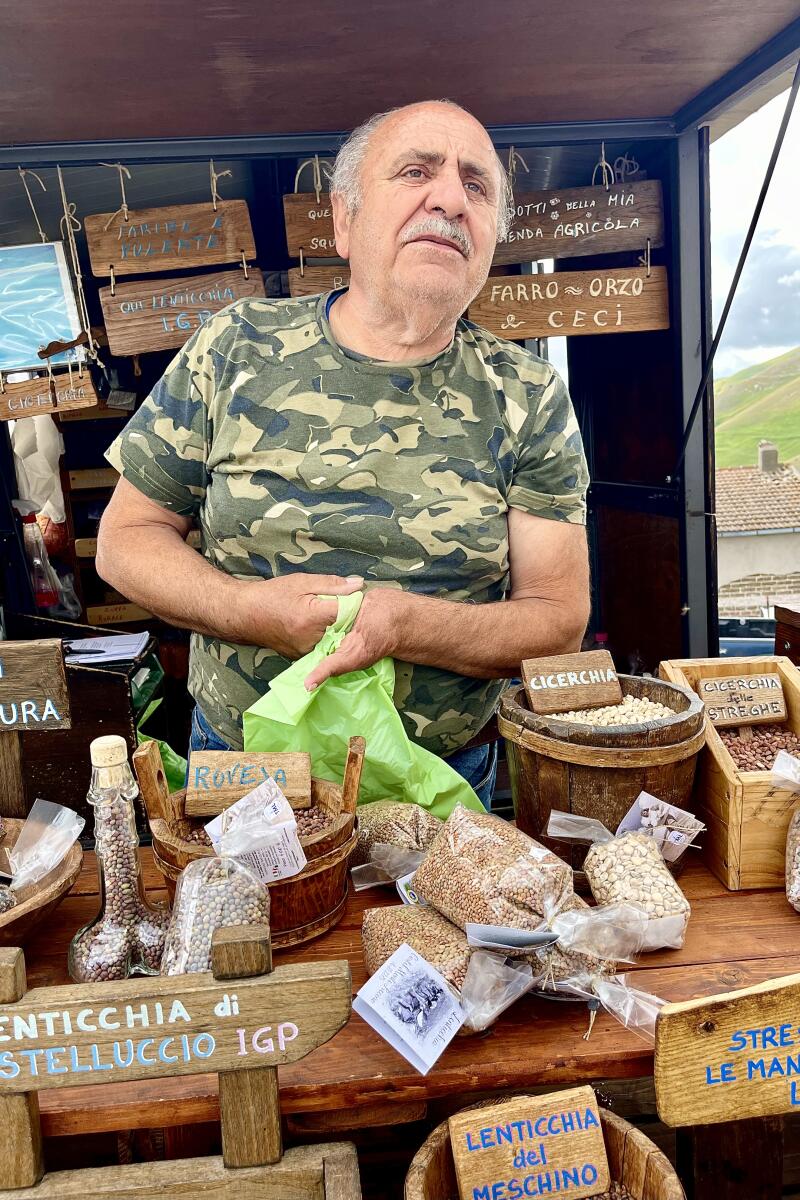
2
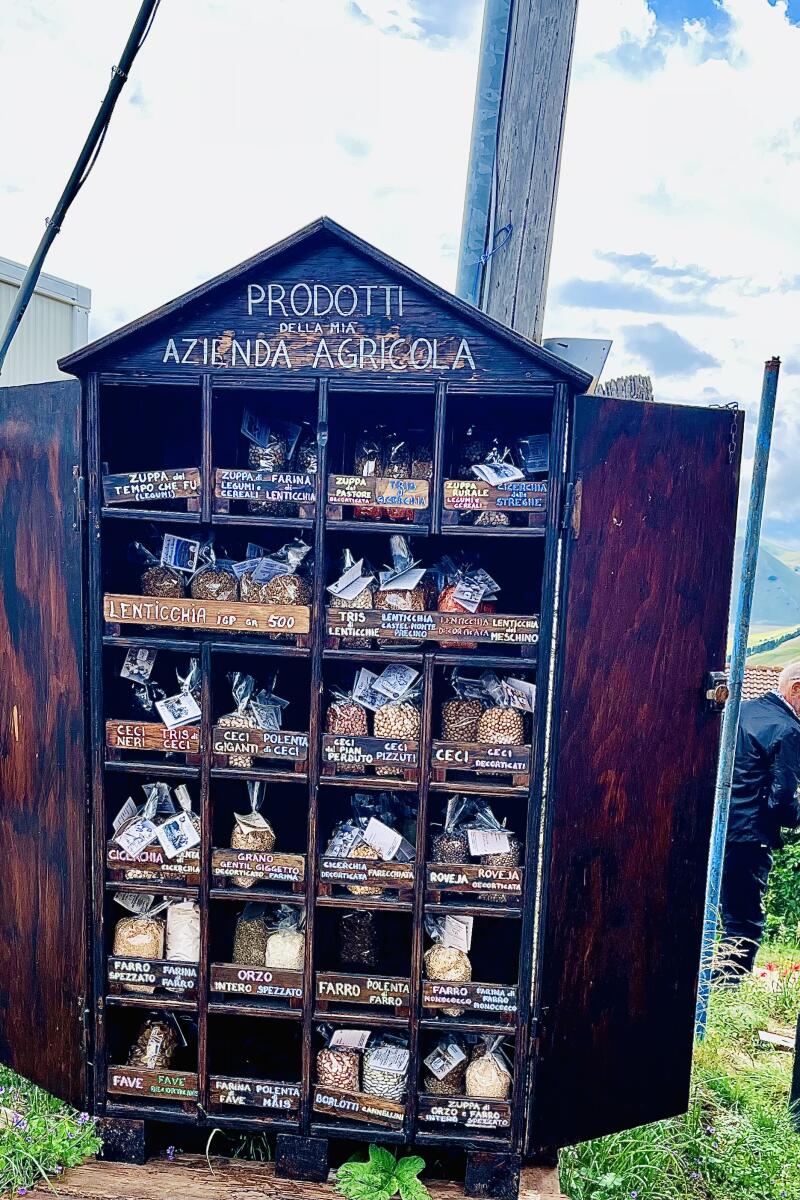
1. At the Castelluccio kiosk selling lentils and other legumes from the Trabalza Maria Luisa farm. 2. The products are grown in the plains around the Umbrian village of Castelluccio. (Laurie Ochoa / Los Angeles Times)
On a summer day it isn’t always easy to find parking between the motor homes and clusters of motorcycles parked on the side of the narrow road. And it’s a good idea to reserve at Taverna Castelluccio.
Of course, we always order lentils, sometimes with sausage, sometimes just plain in a bowl where you can see how each pulse maintains its integrity — no mushiness — and appreciate the tender, luscious flavor. On the package I buy later from the farmer at the Trabalza Maria Luisa kiosk, the label credits hand harvesting of the lentils followed by a slow maturation process during which the legumes are dried in the fields to “enhance the quality” ... “a carefully seasoned reserve that releases all the flavors of the territory from which it is born.”
The lentils are so good they even work as dessert — Taverna Castelluccio makes a fabulous crostata with lentils and ricotta.
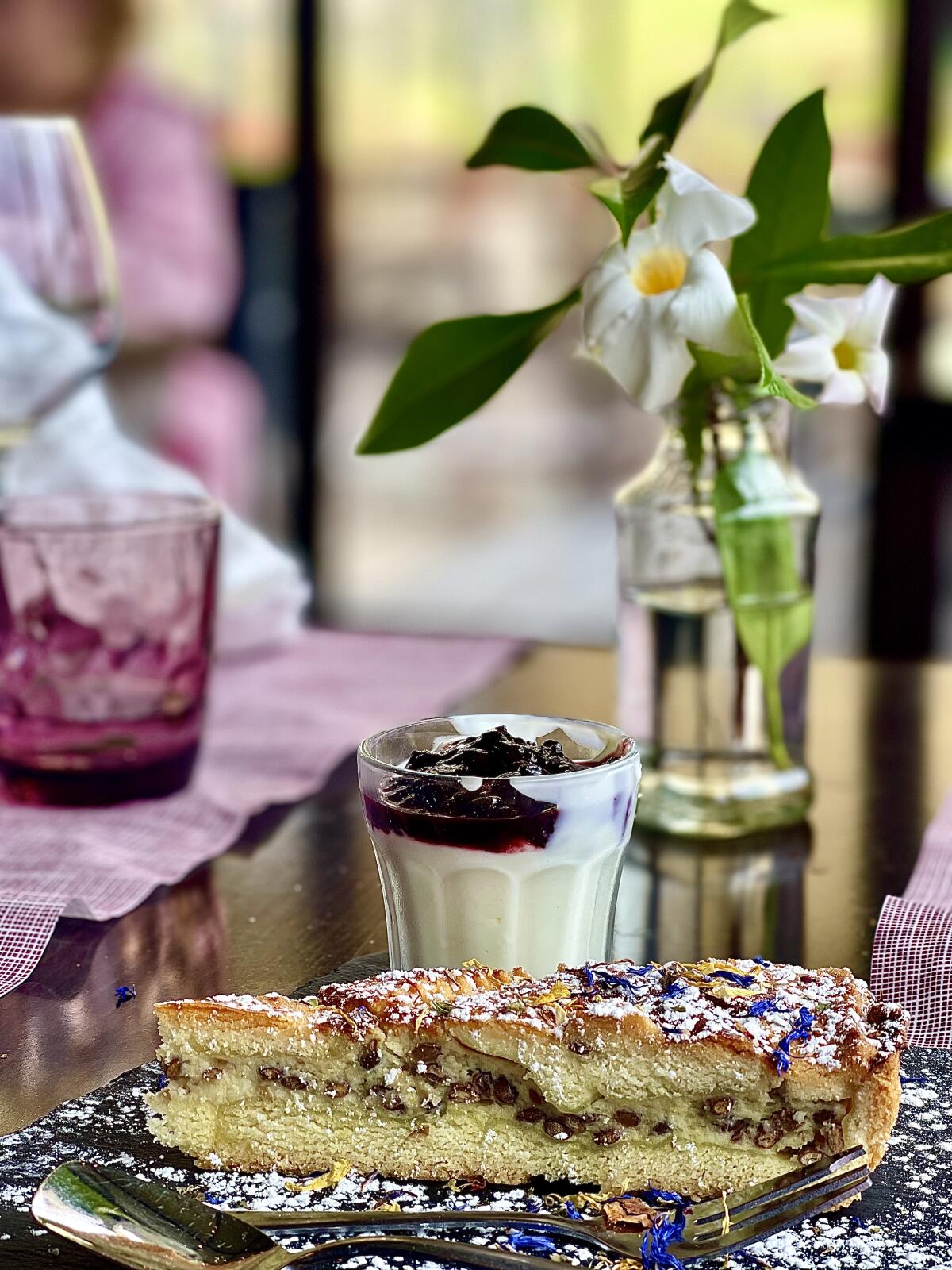
I found a few online sources for Castelluccio lentils — the ones from the Smoking Goose and Supermarket Italy look closest to the variable-hued tan and pale green legumes I ate in Italy, and Kalustyan’s sells what appears to be a more uniform version. But if you ever find yourself with a free day for a beautiful, long drive in central Italy, I highly recommend a trip to Castelluccio where you buy directly from the growers.
Signs of recovery?

There are many Los Angeles chefs who hate the word “pivot.” Ever since COVID — and probably before that — they’ve been asked to adjust and use their ingenuity to keep their staffs employed and their customers fed. After restaurants reopened they had to deal with inflation and the frustratingly slow return to work following last year’s Hollywood strikes. At the end of 2023, Stephanie Breijo documented more than 65 notable L.A.-area restaurants that closed, and in May delved deeper into the dismal state of the restaurant industry and what chefs are facing. Eater L.A. has kept a running tally of this year’s closures and with four months left in the year they’ve tracked some 75 places that have closed.
And yet, as I wrote for our series of preview stories for this month’s L.A. Times Food Bowl — see tomorrow’s Sunday paper — “amid all these losses, chefs and restaurateurs continue to open ambitious, personal and creatively challenging places that even in tough times make Los Angeles one of the most exciting restaurant cities in the world.”
Many chefs — including several who came to our L.A. Times Test Kitchen for our new ongoing video series “Chef That!” — talked about why they remain ambitious and keep opening restaurants. Pasjoli chef Dave Beran looks ahead and calls this “a magical time for L.A. ... There are a lot of really special things that are going to happen.”
Jordan Kahn’s Vespertine return and a cacao jungle
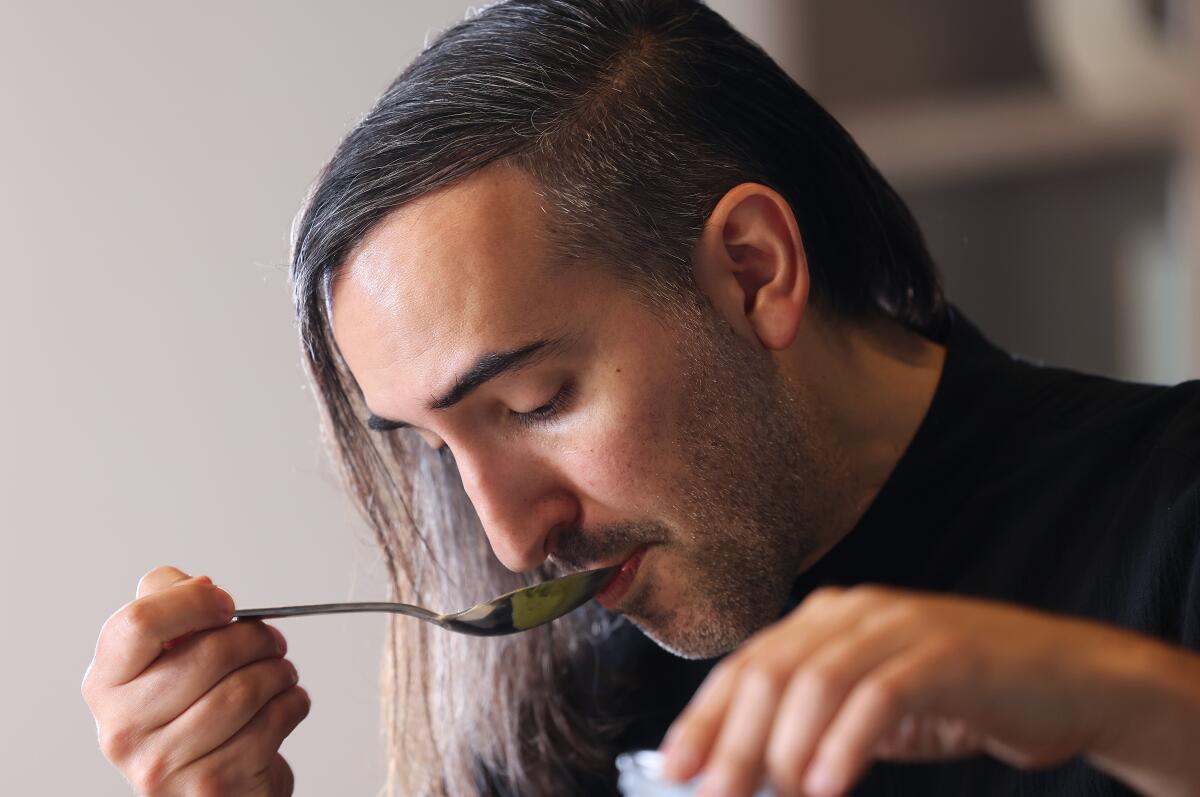
Among the restaurants that have returned this year is Jordan Kahn’s Vespertine. Just a few months after reopening in spring, the restaurant saw its two Michelin stars restored and Kahn’s second restaurant Meteora received its first Michelin star. Stephanie Breijo talked with the chef about the long road back for Vespertine and about the elaborate cacao jungle he’s planning for this month’s L.A. Times Food Bowl.
Kahn also came to the L.A. Times Test Kitchen and demonstrated his take on a Cubano sandwich for our video series “Chef That!” with recipes for the pork belly sandwich plus a mamey milkshake and mariquitas Cubanas (fried plantain chips).
We also have a “Chef That!” segment from Socalo and Alice B chef Mary Sue Milliken, who made flavor-packed fennel and herb grilled ribs and shared the recipe and her chef tips. Plus, Betty Hallock describes why the ribs are so “all-in addictive.”
A rare Turkish delight
1

2

1. Senem Sanli, owner of coffee shop Lokl Haus and Lokl Haus Kitchen pop-up in Santa Monica. 2. Turkish döner kebab is served at the pop-up on Wednesday and Saturday evenings. (Christina House / Los Angeles Times)
“Where are the good Turkish restaurants in L.A.?”
That’s the question Times audience engagement fellow Defne Karabatur asked restaurant critic Bill Addison when she first came to the paper. “It was an excellent question to which I had no gratifying answer,” he writes in his most recent restaurant review about the Santa Monica coffee shop Lokl Haus its pop-up spot Lokl Haus Kitchen. Karabatur told Addison about the coffee shop, which serves Turkish-style breakfasts, and the pop-up, which on Wednesdays and Saturdays serves döner kebab and other Turkish specialties. Addison is a new fan of the place and, perhaps more telling, Karabatur says, “This tastes like home.”
Also ...
You’re reading Tasting Notes
Our L.A. Times restaurant experts share insights and off-the-cuff takes on where they’re eating right now.
You may occasionally receive promotional content from the Los Angeles Times.

—
— Cindy Carcamo talked with family members of Wally Amos, founder of Hollywood’s iconic Famous Amos cookie shop, about why the bite-sized chocolate chip-pecan cookies from a former talent agent (he signed Simon and Garfunkel and worked with Diana Ross, Dionne Warwick and Sam Cooke among others) became a national phenomenon. He died Aug. 13.
— Carcamo also went to opening day of L.A.’s first Hello Kitty cafe at Universal City Walk. Many waited hours in the morning heat to be first in line to try the pastel-pink grab-and-go desserts and drinks. One customer drove 300 miles to be there. Explained one woman: “We’re all healing our inner child.”
— Times 404 video creator Tom Carroll put together a segment detailing the history of Oki Dog — a “place for honorable freaks” — which just closed its West Hollywood location but hopes to reopen in 2025.
— Business writer Caroline Petrow-Cohen details the belt-tightening Shake Shack is undergoing here on the West Coast.
— Columnist LZ Granderson on why Donald Trump‘s bacon talk isn’t fully cooked.
— Christopher Goffard on the “Disney-obsessed couple” who lost their lawsuit to get back into Disneyland’s exclusive Club 33.
— Business’ Queenie Wong on whether a Kroger and Albertsons merger would drive grocery prices up or down.
— Eric Valle put together a guide to 12 essential L.A. Salvadoran spots.
— Assistant food editor Danielle Dorsey compiled the best places to eat and drink in L.A. this month.
— And if you’re melting in the heat, it’s a good time to check our Summer of Ice Cream series with tips on where to get L.A.’s best ice cream, from gelaterias to vegan creameries plus a ranking of soft serve brands and more.
Finally ...
About frying eggs on the sidewalk. Smithsonian magazine is correct that on Oct. 5, 1933, the L.A. Times published a brief on the subject ... with a cartoon featuring a hen trying to stay cool while two sweating men discuss egg — and chicken — frying. But after searching the archives and finding the Times story, written on a day when “it was so hot in Van Nuys ... that paint on the western side of homes blistered and burned” and temperatures “ran from 102 to 112 degs,” I don’t think the editors were taking the idea seriously:
“Sidewalks were so torrid the heat could be felt though shoe soles. Nobody tried to fry eggs in the sun in the street, but discussions on every corner was to the effect that it could be done, if the eggs and the frying pan had been handy.”

Eat your way across L.A.
Like what you're reading? Sign up to get it in your inbox every week.
You may occasionally receive promotional content from the Los Angeles Times.
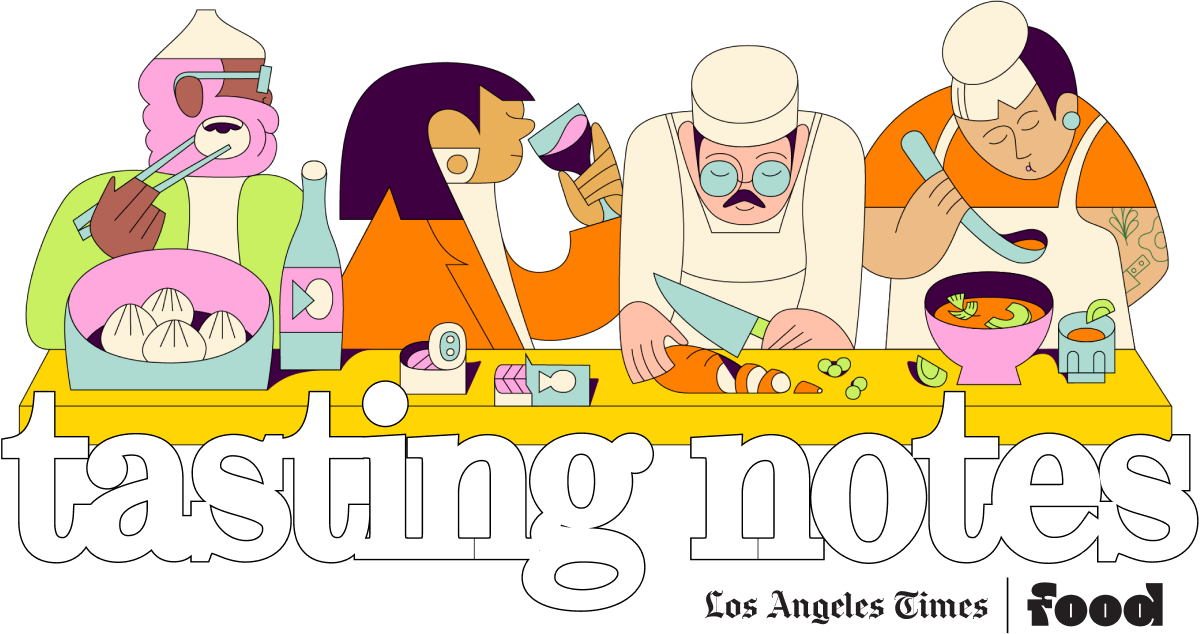
Eat your way across L.A.
Get our weekly Tasting Notes newsletter for reviews, news and more.
You may occasionally receive promotional content from the Los Angeles Times.



